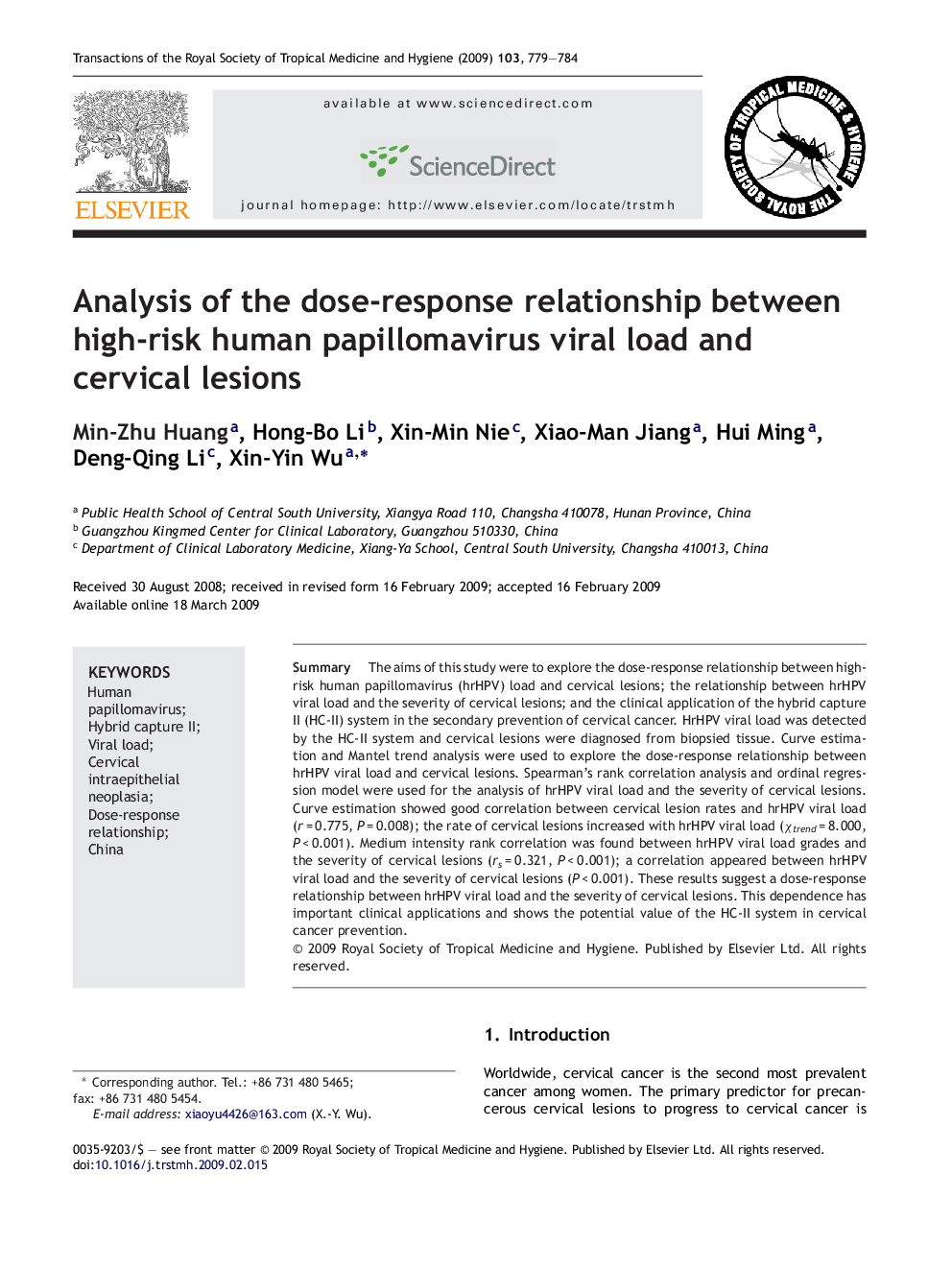| Article ID | Journal | Published Year | Pages | File Type |
|---|---|---|---|---|
| 3420928 | Transactions of the Royal Society of Tropical Medicine and Hygiene | 2009 | 6 Pages |
Abstract
The aims of this study were to explore the dose-response relationship between high-risk human papillomavirus (hrHPV) load and cervical lesions; the relationship between hrHPV viral load and the severity of cervical lesions; and the clinical application of the hybrid capture II (HC-II) system in the secondary prevention of cervical cancer. HrHPV viral load was detected by the HC-II system and cervical lesions were diagnosed from biopsied tissue. Curve estimation and Mantel trend analysis were used to explore the dose-response relationship between hrHPV viral load and cervical lesions. Spearman's rank correlation analysis and ordinal regression model were used for the analysis of hrHPV viral load and the severity of cervical lesions. Curve estimation showed good correlation between cervical lesion rates and hrHPV viral load (r = 0.775, P = 0.008); the rate of cervical lesions increased with hrHPV viral load (Ïtrend = 8.000, P < 0.001). Medium intensity rank correlation was found between hrHPV viral load grades and the severity of cervical lesions (rs = 0.321, P < 0.001); a correlation appeared between hrHPV viral load and the severity of cervical lesions (P < 0.001). These results suggest a dose-response relationship between hrHPV viral load and the severity of cervical lesions. This dependence has important clinical applications and shows the potential value of the HC-II system in cervical cancer prevention.
Keywords
Related Topics
Life Sciences
Immunology and Microbiology
Applied Microbiology and Biotechnology
Authors
Min-Zhu Huang, Hong-Bo Li, Xin-Min Nie, Xiao-Man Jiang, Hui Ming, Deng-Qing Li, Xin-Yin Wu,
